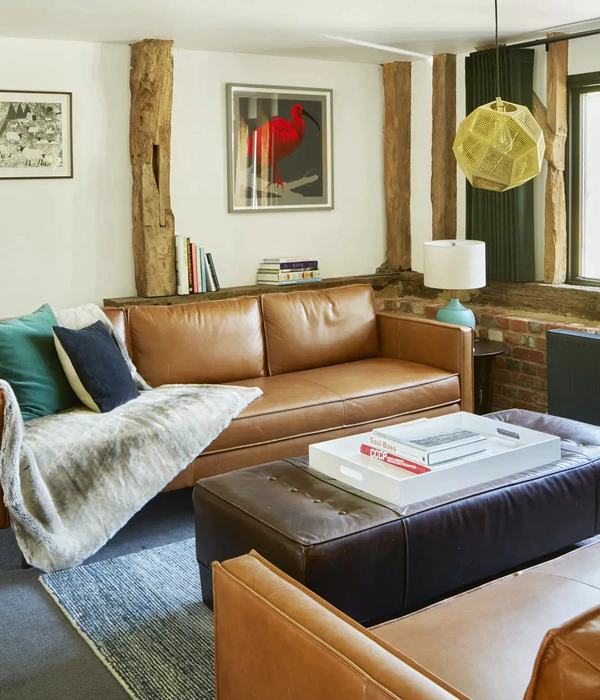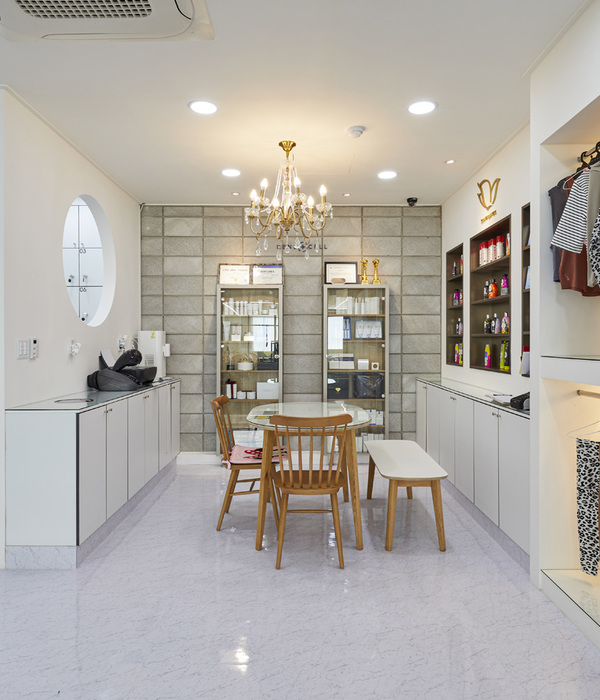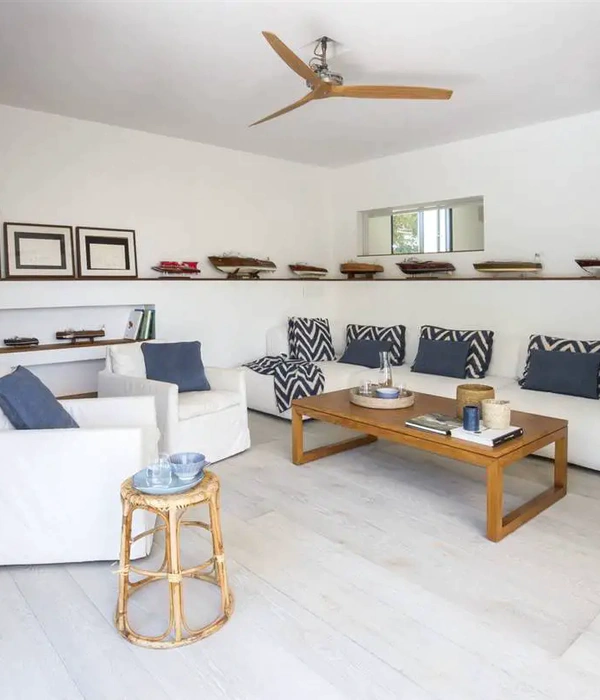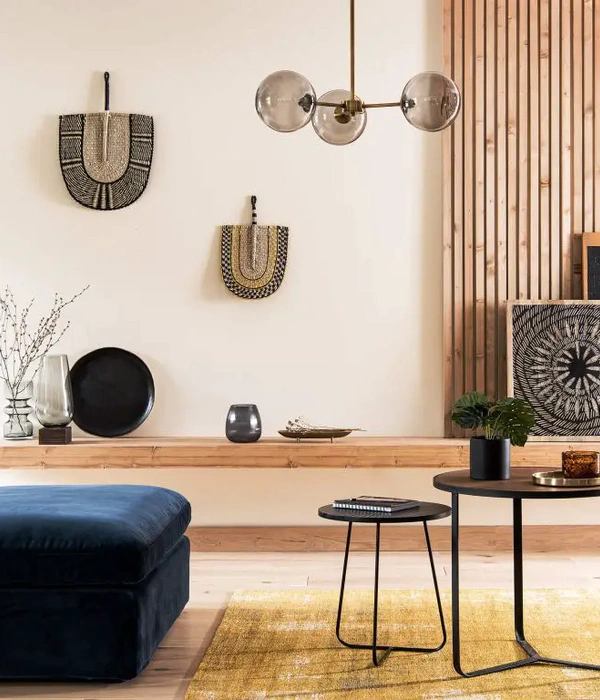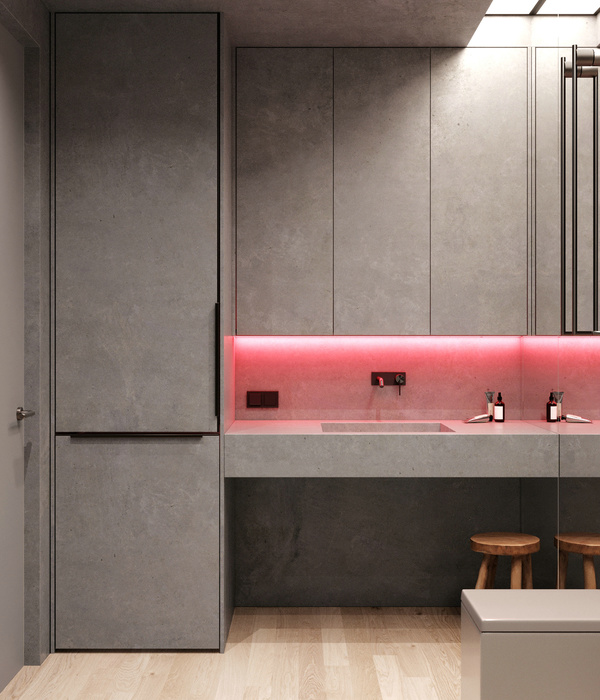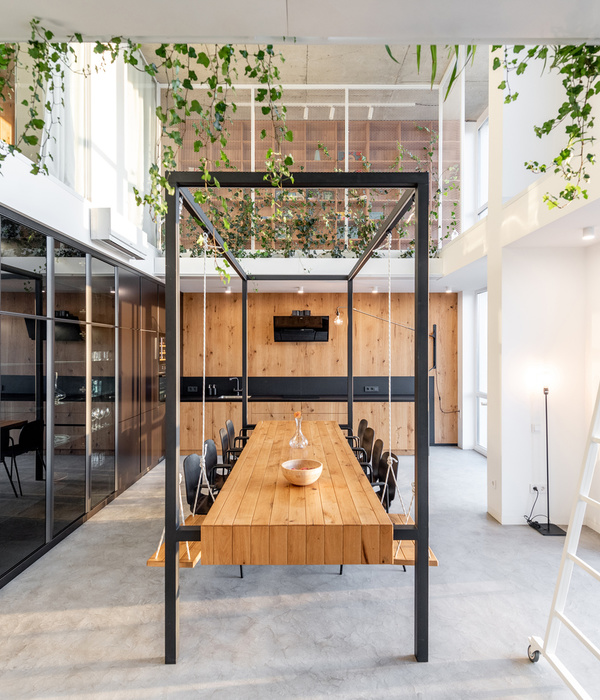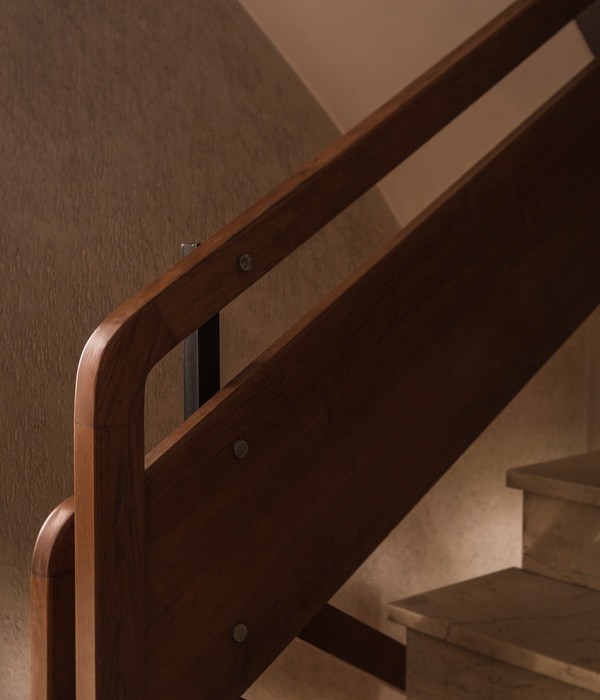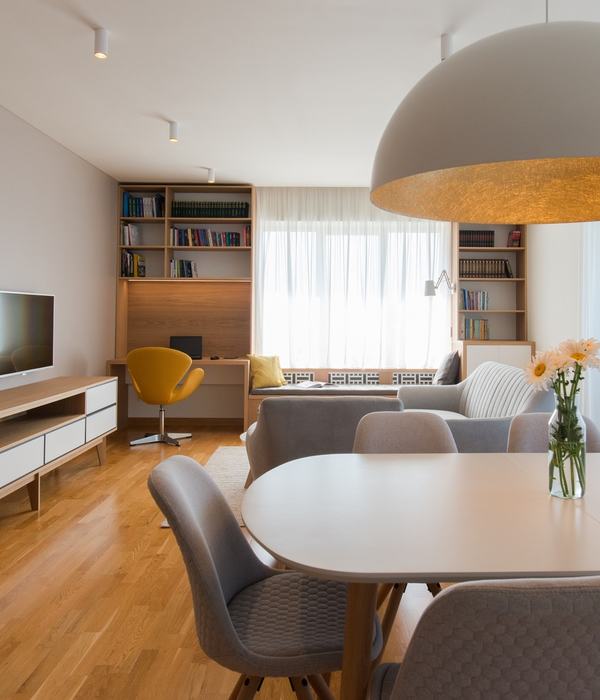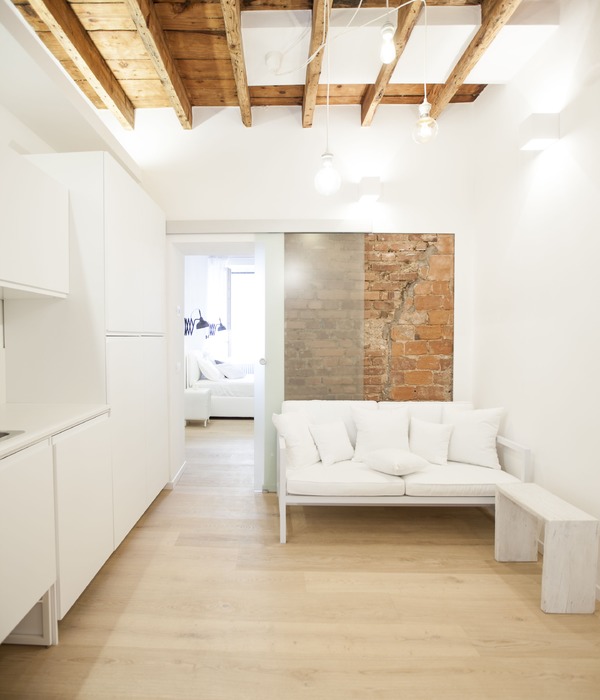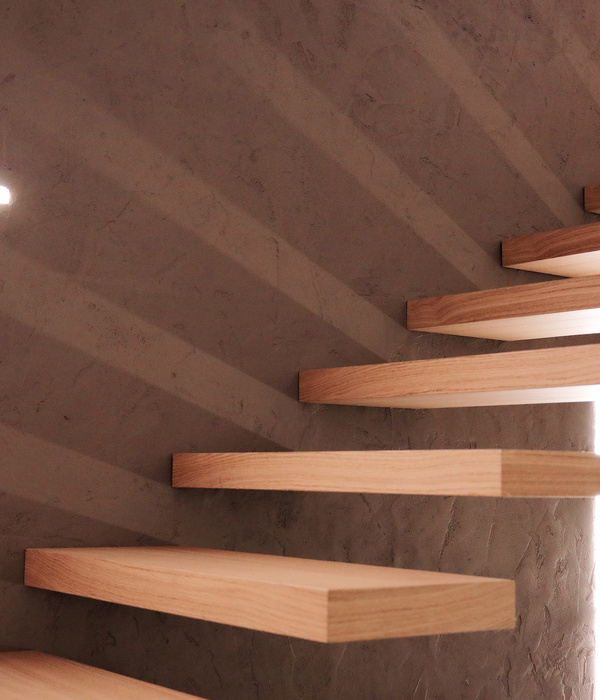“Simply sculptural. This is an amazing way to cluster a lot of houses. It is a great mix. Every piece was well resolved with no wasted space. The roof is accessible and beautiful.”
—2013 Professional Awards Jury
“这是巧夺天工的雕塑艺术!建筑群的布局令人称奇!这是伟大的组合!每个建筑单元的设计都没有浪费空间。屋顶可以直达,景致迷人!
—2013专业奖评审委员会
Hebil 157 Houses By
CEVSA Landscape Firm
&
AYTAC Architects Istanbul, Turkey
更多请至:
,
All Images © Mehmet Okutan
Hebil 157 Houses是位于土耳其西南海岸博德鲁姆半岛上共5间高档别墅的住宅项目。别墅群于风景中凸起,召唤着人们对传奇火山Kos(位于别墅区域附近)岩浆流的古老记忆。设计师在景观设计中首先考虑了保留现有自然景色、地形和树林,并对这些元素进行重新利用;其次便考虑了运用当地植物。10,000株薰衣草和花间翩翩起舞的蝴蝶让整个区域骤然变成了天堂。
Hebil 157 Houses is a residential project consists of 5 luxury villas in Bodrum Peninsula, on the southwestern coast of Turkey. The buildings grow from the landscape and recall the crystalline lava flows of the legendry Volcano Kos once located near the Hebil 157 Site. Landscape design starts with the respect to the natural landscape, preserve the existing topography and the existing grove and reuse again, then continue the design with using the local flora. Consequently, this land turns into a paradise, using 10.000 lavenders and the butterflies flying on them.
▲平面图(非等比例)Plan of the Project (not to scale).
Hebil 157是博德鲁姆半岛北部一片5英亩的倾斜土地上修建的高档别墅项目。别墅区坐落在土耳其西南部的爱琴海岸,北面可以欣赏Hebil海岸和爱琴海风光。特殊的地理位置形成了当地的玄武岩地质,传说中Kos火山曾经喷发,带来的大量岩浆流和火山碎屑岩造就了这片富饶的土地,铺满了繁茂的橄榄树林。
该区域充满着神圣色彩,景色也十分迷人。因此,保护现有地形、根据地形特点修建别墅,最大程度上减少高差变化成为整个设计的根基。基于这种考虑,周围的橄榄树林被保留下来。
施工之前对区域内的50株橄榄树进行了标示并暂时移栽到了区域外的临时护所,以免因建筑工程受到损坏。同时调查了原有的用火山砾岩砌成的墙壁,确保别墅区的布局不会占用这些石墙的位置,从而更好地保护石墙。
建筑师Alper Aytac通过该设计表达了“建筑是地形的延伸”理念。五所别墅的形状看起来像极了Volcano Kos喷涌而出的岩浆流凝固体。在地势中凸起的旋涡状“博德鲁姆白色”建筑群安静地躺在周围的巨幅环境背景中。建筑在材质上和空间组织上都体现了火山的烙印。空间流畅地连为整体,毫无分隔感。建筑结构和流畅的内外空间不仅保证了隐私,还提供了极佳的观景视野。所用材料包括当地石头、白色墙壁、木地板、全景玻璃窗等。住宅室内仅采用了火山玄武岩。外部区域和石墙屏风大量采用就地挖掘的当地火山集块岩。巨大的玻璃面将如画的风景带入室内,模糊了室内室外的界限。
建筑群从风景中缓缓升起,屋顶一部分栽种了绿植。每一幢别墅都拥抱着百年橄榄树,而中央庭院则毫不保留地展示着对当地植被的敬意。每一幢别墅都有一片私人梯地,种植着移栽而来的橄榄树,梯地旁边是边缘由穆拉诺玻璃马赛克铺就的泳池。梯地面对着轻拂的海风。建筑师在靠近厨房的区域栽种了博德鲁姆当地芬芳的柑橘树和其他柑橘类植物(如红柑、葡萄柚和柠檬)、及一些月桂树。石头斜坡也是一个小花园,上面栽种了当地的抗旱耐盐草和百里香、鼠尾草等草本植物,并大面积种植了薰衣草。这些植物区域吸引着动物群,从夏季到早秋时节,各种紫色到粉红色的渐变最是让人印象深刻。薰衣草和草本植物的花朵为这片绿地增添了色彩,而绚烂的自然色彩又映射到住宅内部的家具和锦砖上。
该项目探索了动态和复杂的自然力量之间的丰富联系,以期通过运用这种联系打造出融于自然风景的休闲式疗养环境。该项目是由一对建筑设计师和景观设计师夫妇共同完成的。
▲建筑拥抱着中央庭院的百年橄榄树,10,000薰衣草吸引着本土生物。Each building embraces the century old olive tree in the central courtyard and 10,000 lavenders attract native fauna.
▲东部航拍图Aerial photo from east side.
▲航拍近景图Closer aerial photo.
▲ Hebil海湾全貌(自西拍摄)From west side, panorama of Hebil Bay.
▲带泳池和露台的别墅The building with its pool and the terrace.
▲折叠装墙壁和台阶夜景Folded walls and the stairs in the night time.
▲ 薰衣草点缀的休闲式疗养环境。Relaxing therapeutic environment, with lavender planting.
▲客厅到露台,薰衣草般的紫色从花瓶到沙发再到露台长椅逐渐变淡。From living room to the terrace, degradation of violet colors like lavenders, in the vases, on the sofas and chaise lounges.
▲ 当地火山集块岩;该项目大量运用了现场挖掘的材料。Local volcanic agglomerate, the output of in-situ excavations has been used extensively.
▲ 薰衣草、橄榄树和柑橘树共同构成的景观 Togetherness of the lavenders, olives and the mandarin tree.
▲木材铺就的露台和屋顶花园 Wood decks and the roof gardens.
▲厨房外的Bodrum柑橘树和穆拉诺玻璃马赛克铺就的泳池 Close to the kitchen, planted a Bodrum mandarin tree and murano glass mosaic paved pool.
▲白墙、多孔钢板墙和石墙上投射着橄榄树的影子 Shadow of the olives on the white, perforated steel and stone walls.
▲薰衣草和Hebil海景环抱之下的木质露台上的浴缸与淋浴。Jacuzzi and the shower on the wood deck is surrounded by the lavenders and the Hebil Bay view.
▲ 岩石遍布的花园 Rock garden.
Here is more information:
Hebil 157 is a boutique development of five villas on a sloping five acre site north of Bodrum and set on the Aegean coast of south western Turkey. The site has views of northwards over Hebil Bay and the Aegean Sea. All this from a basaltic geology through which legendry Volcano Kos has erupted and produced lava flows and pyroclastic rocks. This rich geology is clothed with olive groves.
The setting is sublime and the views beautiful. So the first thing to ensure was to protect the topography, and place the villas with the landform and minimize grade change. This has ensured the retention of the surrounding olive groves.
Prior to construction began fifty olive trees, which would be affected by the new buildings, were identified, marked and prepared for removal and re-use and placed in an off-site holding nursery. Existing volcanic conglomerate stone field walls were surveyed and the buildings are located to retain these walls.
Architect Alper Aytac sees the design as an expression of the idea that ‘Architecture as the extension of topography’: The five villas are shaped and formed like the crystallized lava flows of the legendry Volcano Kos. Erupting out of the terrain dramatically, the vortexing “Bodrum White” masses merge into the background with serenity. The influence of the volcano is experienced both in materiality and spatial organization. The spaces are fluidly connected, rejecting compartmentalization.
The forms and flowing internal and external spaces provide privacy while ensuring views. Materials are the local stone, white rendered walls, wood decking and glazed panoramic windows. No stone other than volcanic basalt has been used in the interior spaces. For the external spaces and the stone screen walls, local volcanic agglomerate, the output of in-situ excavations has been used extensively. Large glass surfaces bring the picturesque landscape inside, blurring the division between inside and outside.
The buildings grow from the landscape and the roofs are partially vegetated. Each villa embraces the century old olive trees the central courtyard pays homage to the local flora. Each villa has a private terrace with replanted olive trees and a pool lined with Murano glass mosaic and the terraces are open to sea breezes. Close to each kitchen landscape architect has also planted a native Bodrum mandarin and other Citrus trees (Citrus reticulata, C. paradisi and C. lemon) for their fragrance and of course some Bay Laurel (Laurus nobilis). Slopes offered rock gardens and planted with native drought and salt tolerant grasses and herbaceous plantings (such as Thymus and Salvia), and use of lavender (Lavandula pinnata, L. angustifolia, and L dentata) in mass planting. These areas has become attractive points for the fauna. In the project, color transition from the variations of the violet to pink is the most memorable element during the summer and early fall time. Color is found in the flowers of lavenders and in the flowers of herbaceous plants. These colours are then reflected in the interior furnishings and the applied mosaics in the villas.
The project investigates the rich relationship between the dynamic and complex forces of nature, and aim to work with them to produce relaxing therapeutic environment in touch with the natural landscape. The development is a product of a husband and wife team of architect and landscape architect. (
VIA:ASLA
)
{{item.text_origin}}

